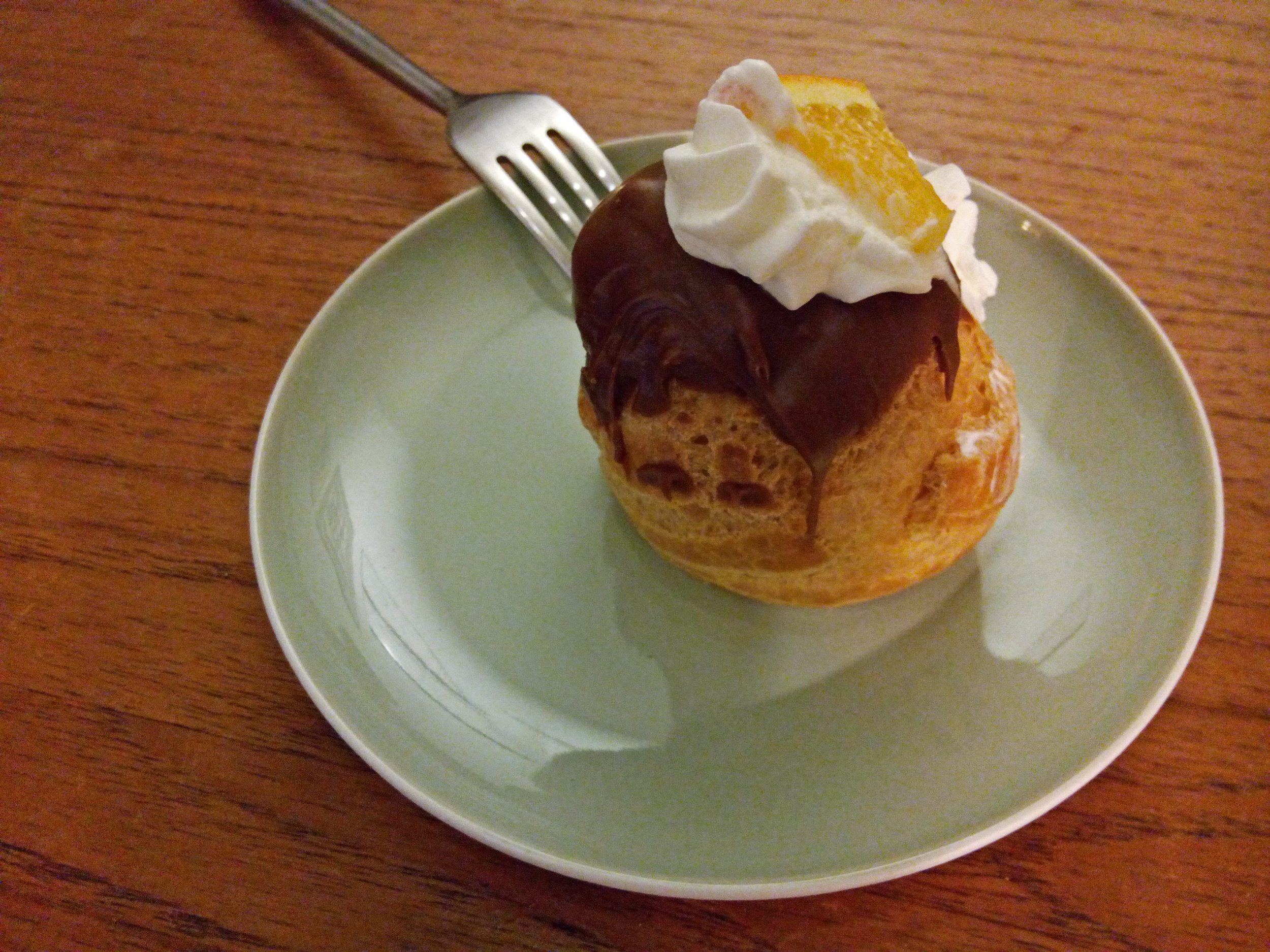It's simple. If it's your birthday, you get to choose the dessert. Go ahead, you can choose whatever you want.
In my house, choosing whatever you want has mostly come down to choosing one of my mom's three signature desserts. Not that there aren't any more options...these are just the most popular ones. I tend to go for a decorated version of her chocolate gâteau, my dad invariably opts for a layered concoction with waffles and custard (I'll explain that one another time) and my brothers, if they're feeling bold, ask for plates of "petits choux." Don't let the name of this final option fool you, though. These profiteroles filled with vanilla custard and topped with chocolate ganache are far from small! They're also rich, delicious and a lot of work. That last bit, at least, is what I remember my mom saying every time someone requested them.
So yes, I was feeling a little bit anxious when I read that we'd be making choux pastry in baking class this week. This idea that choux pastry is massively complex to make and very unforgiving, too, was strongly ingrained in my mind. But you know what? Even in the chaos that is baking class, making choux pastry turned out to be much easier than I thought.
See for yourself.
choux pastry
recipe from baking class (syntra west)
100 gr butter
250 gr water (you could also use milk, if you prefer)
200 gr flour
5 or 6 large eggs
how to
1. Start by warming water and butter in a saucepan on the stove. By the time the water hits boiling point, your butter should be melted completely. If not, take your pot of the heat for a while and wait for the butter to melt completely.
2. Next, using a large wooden spoon, stir in flour. It will seem like a lot, but just mix it all in and put it back on the stove to let it dry. Continue stirring until you see a thin layer of dough sticking to the bottom of the pan. This layer should be the same color as the dough; don't let it burn. Take the pan off the heat and transfer your dough to a mixing bowl.
3. Start adding the eggs, one at a time, making sure that each egg is incorporated before you add the next. It takes a little stirring before it comes together, though, so don't worry if it looks impossible at first. This is the trickiest part of choux pastry because you need to see when your dough is finished exactly. Depending on the size of your eggs and on how much your dough dried in the cooking process, you may need to add an extra egg or even leave one out. Start checking the consistency of your dough after you've added the fourth or fifth egg. To do this, you take a big scoop of the dough and then wiggle your spoon so that it falls off. If the remainder of the dough hangs from the spoon in a sharp point, you're good to go.
4. Transfer the dough to a piping bag and pipe little rounds (ca. 4 cm in diameter) or logs on a baking sheet. You can lightly spray the baking sheet with oil, but be sure not to overdo it or your choux will slide away. Don't make your rounds too big either and give them some room to grow. They'll puff up nicely in the oven.
5. Bake the choux in a preheated oven of 220˚C. Depending on the size of your choux, they'll need about 20 to 30 minutes. Keep an eye on them, but fight the urge to open the oven door. If you open it too soon, your choux might collapse. No one likes a deflated choux...where's the filling going to go?
6. Allow to cool completely. Fill with crème patissière, whipped cream, curd, ...

